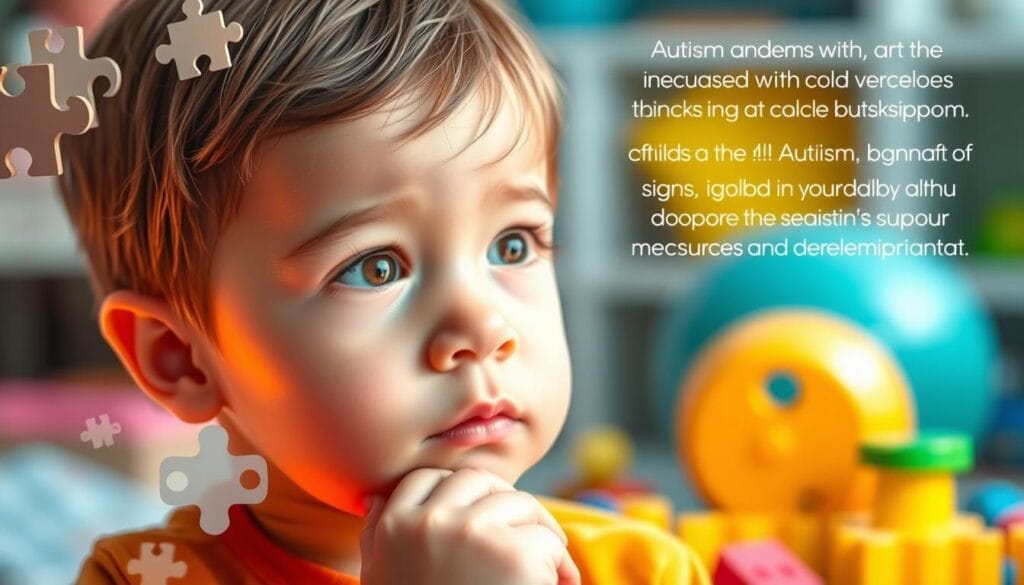A Parent’s Guide to Autism:Have you ever wondered how to best support your child with autism spectrum disorder? Understanding autism can feel overwhelming, but with the right guidance, you can create a nurturing environment that fosters growth and well-being.
This guide is designed to empower you with essential tips, interventions, and resources to help your child thrive. Early diagnosis and intervention are crucial, as they lay the foundation for optimal outcomes. You are not alone in this journey—building a strong support network is key to navigating the challenges ahead.
We will explore diagnostic processes, treatment options, and practical strategies for day-to-day challenges. Drawing from reputable sources like Autism Speaks, this guide offers reliable resources and actionable advice to help you every step of the way.
Our goal is to provide a compassionate and informative tone, reassuring you while offering clear direction for the future. Let’s embark on this journey together, building a bright and hopeful path for your child.
Table of Contents
Key Takeaways
- Early intervention significantly impacts outcomes for children with autism.
- Building a strong support network is essential for managing autism.
- Reliable resources and actionable advice are available to guide you.
- Understanding the diagnostic process can empower your decision-making.
- Practical strategies can help you address day-to-day challenges.
Understanding Autism Spectrum Disorder
Autism Spectrum Disorder, commonly known as ASD, is a neurological and developmental condition that affects how individuals perceive and interact with the world. It is called a “spectrum” because it encompasses a wide range of experiences and symptoms, varying significantly from one individual to another. While some may face challenges in communication and social interactions, others might exhibit repetitive behaviors or have highly focused interests.
ASD can impact three primary areas: communication, social interaction, and behavior. Challenges in communication might include difficulty with verbal or non-verbal exchanges, while social interactions may be strained due to trouble understanding social cues. Behavioral patterns could involve repetitive actions or a strong preference for routine. It’s important to note that these symptoms can be subtle in early childhood but may become more apparent as social and academic demands increase.
“Understanding that each child with ASD is unique is the first step toward providing effective support.”
Gathering accurate information and using reliable resources is crucial for comprehending ASD. Misconceptions about autism, such as believing all individuals with ASD are introverted or have exceptional talents, can hinder understanding. In reality, the experiences of autistic children and their families vary widely. Diagnosis plays a pivotal role in unlocking access to appropriate treatments and support systems, benefiting both the child and the family.
With the right information and tools, you can better support your autistic child’s development. Embracing diversity and tailoring strategies to meet individual needs are essential for fostering growth and well-being.
Recognizing Signs and Symptoms in Your Child
Identifying early signs of autism spectrum disorder (ASD) can be a critical step in ensuring your child receives timely support. While every child develops at their own pace, certain behavioral patterns may indicate the need for further evaluation.
Early Development Indicators
Some common early signs of ASD include:
- Not responding to their name or showing limited eye contact.
- Preferring solitary play over interactive games with peers.
- Displaying unusual attachments to objects or routines.
These indicators don’t necessarily mean your child has ASD, but they do warrant attention and professional assessment.
Communication and Social Skills Warning Signs
Difficulties in communication and social interactions can also signal potential issues. For example:
- Struggling to engage in back-and-forth conversations.
- Showing little interest in sharing thoughts or interests with others.
If you notice these challenges persisting, it’s important to seek guidance from a healthcare professional.

Remember, early detection can pave the way for timely interventions and improved developmental outcomes. Monitoring your child’s behavior and consulting with specialists can provide valuable insights and support.
Navigating Diagnosis and Evaluation
Diagnosing autism spectrum disorder (ASD) is a thorough process that requires careful evaluation. Early screening is essential for identifying potential signs of ASD, ensuring timely intervention and support.
Initial Screening and Comprehensive Assessments
The diagnostic process typically begins with initial screening to identify red flags. Comprehensive assessments then follow, involving both parent interviews and clinician observations. These assessments provide a detailed understanding of your child’s communication challenges and behavioral patterns.
Key Diagnostic Tools and Procedures
Experienced professionals use tools like the Autism Diagnostic Observation Schedule (ADOS-2) and the Autism Diagnostic Interview-Revised (ADI-R). These tools help evaluate social interaction, communication, and behavior. Accurate diagnosis opens the door to appropriate support and intervention services.
Preparing for the evaluation process can make it smoother. Maintaining open dialogue with healthcare providers ensures progress is tracked, and reassessments are done as needed. Remember, early and accurate diagnosis is crucial for accessing the right support and intervention services.

Effective Interventions and Treatment Options
When it comes to addressing autism spectrum disorder (ASD), finding the right interventions can make a significant difference. Evidence-based therapies, tailored strategies, and a supportive team are key to helping your child thrive.
Evidence-Based Therapies
Several therapies are widely recommended for children with ASD. Applied Behavior Analysis (ABA) focuses on improving social and communication skills. Occupational Therapy (OT) helps with sensory processing and daily tasks. Speech Therapy targets communication challenges, while Physical Therapy (PT) supports motor skills development.
| Therapy | Focus | Benefits |
|---|---|---|
| Applied Behavior Analysis (ABA) | Social and communication skills | Improves behavior and skill acquisition |
| Occupational Therapy (OT) | Sensory processing and daily tasks | Enhances sensory integration and daily functioning |
| Speech Therapy | Communication challenges | Boosts verbal and non-verbal communication |
| Physical Therapy (PT) | Motor skills | Supports physical development and coordination |
Behavioral and Sensory Treatments
Behavioral treatments aim to reduce disruptive behaviors and build positive actions. Positive Reinforcement is a method where desired behaviors are encouraged through rewards. Sensory integration therapy helps children manage sensory sensitivities, creating a calmer environment at home.
Customizing Strategies to Your Child’s Needs
Every child with ASD is unique, so it’s crucial to tailor treatments to their specific needs. Involve a multidisciplinary team, including therapists and educators, to create a comprehensive plan. Consistency in applying these strategies at home and in other settings ensures long-term progress.
“A well-rounded treatment plan, combining various therapies and tailored strategies, can significantly improve your child’s quality of life and developmental outcomes.”
Exploring different intervention options and collaborating with professionals will help you determine the best approach. With patience and the right support, your child can overcome challenges and reach their full potential.
Building a Support Network as a Parent
As a parent of a child with autism, having a strong support network is vital. This network can provide emotional backing, practical advice, and access to essential resources. Whether it’s connecting with professionals or joining community groups, building this network can make a significant difference in your journey.
Connecting with Professionals and Community Resources
Professionals play a crucial role in evaluating your child’s condition and guiding treatment decisions. Therapists, educators, and support groups can offer valuable insights and strategies. Community programs often provide structured activities tailored to children with autism, helping them develop social and motor skills.
Sharing experiences with other parents can be incredibly rewarding. Support groups, both online and in-person, provide a space to exchange advice and emotional support. These connections can help you feel less isolated and more empowered in your role as a parent.
To get started, research local therapy programs and community organizations. Many offer evaluations and assessments to identify the best interventions for your child. Online directories and recommendations from other parents can be great resources. Don’t hesitate to reach out—building these connections is a proactive step toward supporting your child’s well-being.
Remember, you’re not alone in this journey. Actively participating in support networks fosters a collaborative approach to managing your child’s condition. With the right support, you can create a nurturing environment that promotes growth and resilience.
A Parent’s Guide to Autism: Your Role and Strategies
As a parent, your role in your child’s autism journey is both vital and transformative. Embracing this role with confidence can make a significant difference in their development and well-being.
Embracing Your Parenting Role in the Journey
Your active participation is crucial in supporting your child’s growth and managing daily challenges. By staying proactive, you can address behaviors and advocate effectively for their needs.
Early intervention and consistent therapy are cornerstone strategies. They lay the groundwork for positive progress and long-term outcomes, helping your child navigate their unique challenges.
Don’t overlook self-care. Caring for yourself ensures you can sustain your support for your child. Seeking help when needed is a sign of strength, not weakness.
When addressing problem behaviors, use actionable strategies. Stay informed and adapt your approach to your child’s needs, ensuring their environment is nurturing and supportive.
Empowerment comes from knowledge and action. By embracing your role, you become your child’s most powerful advocate, guiding them toward a brighter future.
Remember, your role is integral to your child’s journey. With the right strategies and support, you can help them thrive and reach their full potential.
Conclusion
Your journey as a parent of a child with autism spectrum disorder (ASD) is both challenging and rewarding. This guide has provided you with essential insights and practical strategies to support your child’s growth and well-being.
Early diagnosis and personalized interventions are key to fostering positive outcomes. Building a strong support network, including therapists and community resources, ensures you’re never alone in this journey. Evidence-based therapies, such as ABA and speech therapy, offer long-term benefits when tailored to your child’s unique needs.
Remember, every child on the autism spectrum is different. Staying engaged with professionals and continuously learning about ASD will empower you to make informed decisions. Embrace adaptability and remain hopeful—each step you take contributes to your child’s brighter future.
Visit this guide regularly for updates and additional resources. Together, we can create a nurturing environment that supports your child’s development and helps them thrive.

